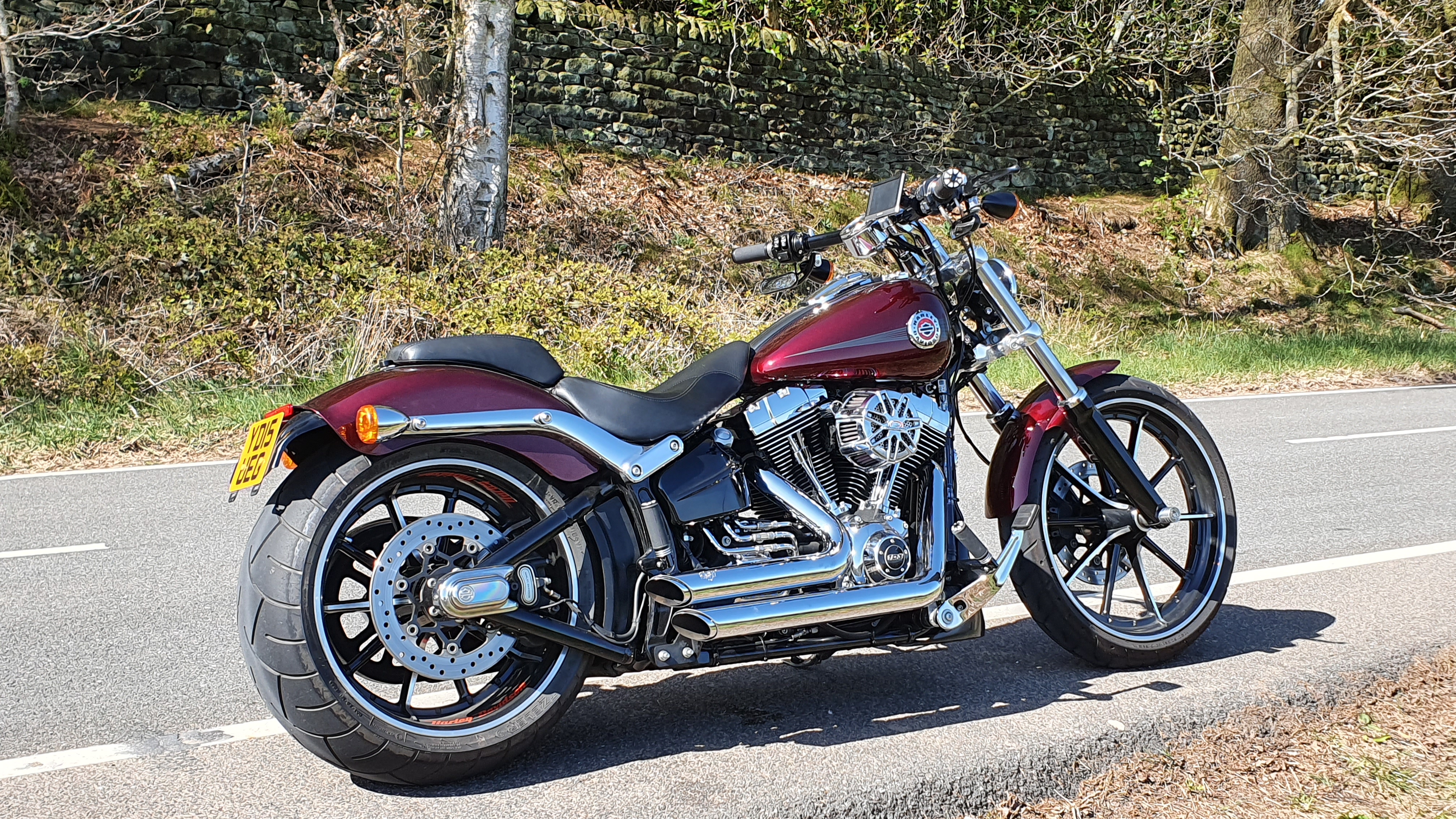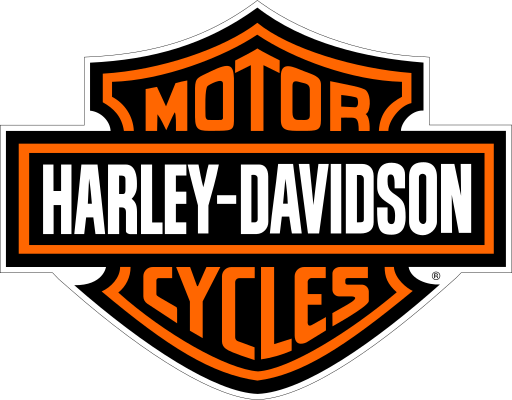Title Page
-
Business Unit
-
Site
-
Conducted on
-
Date of last audit
-
Machine
-
Year of manufacture
-
Prepared by
-
Design version created by Mike Brook _ Mar 23
General Observations & Comments
-
Comments:
Audit Section 1) Pre-Feeder
-
Note* Minimum ESPE light guard heights are 300mm from the floor to prevent a person crawling under the first beam and at least 900mm to the higher beam to prevent a person stepping over the ESPE light guards and should be set a safe distance from the hazard or at least 850mm.
-
Pre-feeder entry point & lift mechanism:
Hazard! Potential access to dangerous moving lift mechanism. Risk of severe crushing injuries. -
1.1) Pre-feeder entry point & lift mechanism:<br>Are there ESPE light guards fitted at the entry points to the pre-feeders that conform to height & distance specifications in relation to the hazard?
-
Failure reason:
-
Note or comment:
-
Note* Safety support pins/ mechanism should be fitted to all lifts to prevent them falling when maintenance or cleaning takes place. These support pins/ mechanism should be fitted with electrical safety interlocks that prevent the lift from moving when the support pins/ mechanism are removed from the home position.
-
1.2) Pre-feeder entry point & lift mechanism:<br>Are there safety support pins/mechanisms in place?
-
Failure reason:
-
Note or comment:
-
Slip sheet area/removal of slip sheets:
Hazard! There is the potential to access into the pre-feeder via the under section of the machine. Potential for serious crushing injuries. -
1.3) Slip sheet area/removal of slip sheets:<br>Has appropriate guarding been fitted to the slip sheet area to prevent an operator reaching into the danger zone (e.g. letter box distance guarding - minimum >850 mm or ESPE light guarding)?
-
Failure reason:
-
Note or comment:
-
Under section of the pre-feeder:
Hazard! There is a potential for contact with unguarded moving conveyor belts and pulleys. Risk of entanglement hazards or traps to hands and fingers. -
1.4) Under section of the pre-feeder:<br>Is the under section of the pre-feeder fully guarded (fence type guarding that prevents fingers reaching through the mesh) to prevent operators coming into contact with dangerous moving parts of equipment?
-
Failure reason:
-
Note or comment:
-
Pre-feeder pusher/feed basket area:
Hazard! Potential contact with moving pusher on the pre-feeder. Risk of severing/ crushing injuries to hands and fingers. -
1.5) Pre-feeder pusher/feed basket area:<br>Has the machine been fitted with ESPE light guards that stop the movement of the pusher when the light beam has been activated?
-
Failure reason:
-
Note or comment:
-
Working at height (top section of pre-feeder):
Hazard! Risk of a fall from height severe injuries, which could result in death. -
1.6) Working at height (top section of pre-feeder):<br>Are there safe access steps/a platform with hand rails attached to the pre-feeder to allow safe access and egress.
-
Failure reason:
-
Note or comment:
-
1.7) Overall machine guarding:<br> Is the whole pre-feeder installation fitted with machinery guarding to prevent operatives entering or touching dangerous moving parts of machinery including, front pusher devices, squaring devices, extendo conveyor belts, rotating & screw shafts?
-
Failure reason:
-
Note or comment:
-
1.8) Pre feeder controls & switches:<br> Are all pre feeder operating controls and switches clearly labelled in the language of the country the equipment will be installed into or have clear pictograms?
-
Failure reason:
-
Note or comment:
Audit Section 2) Feed Unit
-
Feed rollers:
Hazard! Potential for contact with moving feed roller whilst machine is running- risk of serious hand injuries. -
2.1) Feed rollers:<br>Is there rule guarding to the machine side frame and the machine side tamper that prevents access to the dangerous feed rollers?
-
Failure reason:
-
Note or comment:
-
Feed unit basket:
Hazard! Potential for hand & finger injury. -
2.2) Feed unit basket:<br>Is there a two handed feed basket clearance device fitted to prevent operators reaching into the feed unit emptying residual boards in the feed basket, exposing them to the moving vacuum wheels, which could cause serious hand and finger injuries?
-
Failure reason:
-
Note or comment:
-
Feed unit area:
Hazard! Potential for entanglement/trapping of hands, fingers, loose clothing from the moving screw thread on the feed unit back stop. -
2.3) Feed unit area:<br>Is there appropriate guarding in place to prevent the moving screw thread coming into contact with the operator?
-
Failure reason:
-
Note or comment:
Audit Section 3) Print Units
-
Print unit access & egress:
Hazard! Potential for an operative to fall from heights when gaining access or egress to and from this area. Also potential to be exposed to moving print rollers when entering the area. A suitable handrail should be fitted with slip resistant steps. -
3.1) Print unit access & egress:<br>Is there an interlocked access gate fitted to the area that immediately stops the machine if an operator enters the running print unit?
-
Failure reason:
-
Note or comment:
-
3.2) Print unit access & egress:<br>If the print unit access is raised from ground height, are there slip resistant steps and a suitable handrail to gain entry?
-
Failure reason:
-
Note or comment:
-
Individual print units:
Hazard! Potential contact with moving anilox rollers due to insufficient guarding. -
3.3) Individual print units:<br>Is there suitable robust guarding fitted to prevent access to the dangerous moving anilox and rubber rollers?
-
Failure reason:
-
Note or comment:
-
Individual print units:
Hazard! Potential for an operator to get trapped when another operator lowers the print unit into position. -
3.4) Individual print units:<br>Ensure It is NOT possible to lower the print unit with another operator inside the opposite print unit. The electronic interlock MUST isolate this possibility.
-
Failure reason:
-
Note or comment:
-
Individual print units:
Hazard! Potential for operators to trap hands and fingers when fitting printing stereos due to the lack of direction arrows and the possibility of pressing the wrong pedal. -
3.5) Individual print units:<br>Are there ESPE light guards or sensors fitted that immediately stop the rotation of the print cylinder if the operators hand gets too close to the gap between the print cylinder and pressure roller?
-
Failure reason:
-
Note or comment:
-
3.6) Individual print units:<br>Are there toe shrouds fitted to the foot pedals (if fitted with direction arrows); this should reduce the risk of an operator pressing the wrong pedal. Or if a toggle switches are fitted the print cylinder must stop when the switch is released.
-
Failure reason:
-
Note or comment:
-
Individual print units:
Hazard! Potential for a printing stereo to get snatched when fitting one with the machine running. Warped boards could catch the stereo dragging an operators hand into the danger zone. -
3.7) Individual print units:<br>Check and ensure that the protective plate engages under the print unit before an operator can fit a printing stereo.
-
Failure reason:
-
Note or comment:
-
Individual print units:
Hazard! Potential for an operator to get crushed between print units. Also potential trapping of operatives feet from the moving units. -
3.8) Individual print units:<br>Has a roll stop button/wire been fitted to the area that prevents the feed, print or slotting units closing? Check and ensure shrouds are fitted to the wheels to prevent the risk of trapping. There should also be a flashing beacon and audible alarm warning signal when the machine is opened or closed.
-
Failure reason:
-
Note or comment:
Audit Section 4) Die Cut Unit
-
Die cut unit access & egress:
Hazard! Potential for an operative to fall from heights when gaining access or egress to and from this area. Also potential to be exposed to moving rollers/shafts when entering the area. -
4.1) Die cut unit access & egress:<br>Ensure that an interlocked access system is fitted to the area that immediately stops the machine if an operator enters the running die cut unit.
-
Failure reason:
-
Note or comment:
-
Die cut exit area:
Hazard! Potential contact with a moving die cut running roller - risk of serious injury. -
4.2) Die cut exit area:<br>Ensure the access area to the die cut unit is electronically interlocked to prevent operator access with the machine running. Also that the access switch has a re-set when it’s closed.
-
Failure reason:
-
Note or comment:
Audit Section 5) Folding Unit
-
Folding rail area:
Hazard! Potential access from the dangerous moving conveyor belts and pulleys when the machine is running. -
5.1) Folding rail area:<br>Ensure that both sides of the folding rails are guarded with interlocked access gates that need resetting after being opened.
-
Failure reason:
-
Note or comment:
-
Folding rail area:
Hazard! Potential for an operator to get injured when they are reaching through from the folding rails into the counter collector if another operator activates the counter collector pushing device! -
5.2) Folding rail area:<br>Is there an appropriate guard to prevent an operator reaching into the counter collector from inside the folding rails or has an electrical interlock device been fitted that will isolate the counter collector if the folding rail access gate is opened?
-
Failure reason:
-
Note or comment:
-
Folding rail area:
Hazard! Potential for an operator to get crushed when inside the folding rails and the machine is automatically setting for a new order. -
5.3) Folding rail area:<br>Ensure that the machine is isolated and will not operate if the folding rail door is open. <br>A door reset should be outside the danger zone. <br>An audible warning signal should sound when the machine is on set up.
-
Failure reason:
-
Note or comment:
Audit Section 6) Counter Collector
-
Squaring basket area:
Hazard! Potential for serious injury if an operator enters the counter collector when the machine is running. -
6.1) Squaring basket area:<br>Ensure that this area is fully guarded to prevent access to dangerous moving parts of equipment. <br>There should be an electronic interlocking switch that isolates this complete area if the access door is open.
-
Failure reason:
-
Note or comment:
-
Bundle exit area:
Hazard! Potential operator access to dangerous moving parts of machinery such as conveyor belts and moving drive chains - risk of serious injury. -
6.2) Bundle exit area:<br>There should be a fixed guard preventing immediate access at both sides of the machine to the danger zone. <br>All conveyor nipping hazards should be guarded.
-
Failure reason:
-
Note or comment:
Audit Section 7) Twin Box Slitter
-
Twin Box Slitter Unit:
Hazard! Due to the design nature of these machines (high speed guillotines) they are very dangerous and include the following hazards, risk of severe cuts, lacerations and amputations to all body parts, which could result in life changing injuries or death! -
7.1) Access and egress:<br>Has the ENTRY & EXIT points to the slitter been fitted with appropriate machinery guarding such as (fixed or interlocked guarding and or ESPE light curtains) that prevent immediate access (reaching into the machine) to the dangerous moving cutting blade and parts of moving equipment?
-
Failure reason:
-
Note or comment:
-
7.2) Access and egress:<br>Have the access door(s) into the machine (cutting blade area) been fitted with an interlock that will not allow the door to open until all movement of the blade has completely stopped?
-
Failure reason:
-
Note or comment:
-
7.3) Guarding:<br>When an operator or maintenance technician enters the inside of the machine the (cutting blade area) is the cutting blade protected with a protective cover?
-
Failure reason:
-
Note or comment:
-
7.4) Guarding:<br>Have all openings around the twin box slitter been protected with machinery guarding?
-
Failure reason:
-
Note or comment:
-
7.5) Warning siren:<br>Has the machine been fitted with a warning start up alarm that sounds for 3 seconds before allowing the machine to be jogged or be started?
-
Failure reason:
-
Note or comment:
-
7.6) Signage:<br>Are all twin box slitter operating controls and switches clearly labelled in the language of the country the equipment will be installed into or have clear pictograms?
-
Failure reason:
-
Note or comment:
-
7.7) Signage:<br>Has appropriate mandatory signage been put onto the machine to instruct operators to “wear cut resistant gloves, sleeves and clothing before entering this machine”?
-
Failure reason:
-
Note or comment:
Audit Section 8) Strapping Machine
-
8.1) Has the machine been fitted with appropriate machinery guarding (fixed, interlocked and or ESPE light guards) at the entry and outfeed areas to prevent immediate access to dangerous moving equipment?
-
Failure reason:
-
Note or comment:
-
8.2) Strapping unit controls & switches:<br> Have all strapping unit operating controls and switches been clearly labelled in the language of the country the equipment will be installed into or have clear pictograms?
-
Failure reason:
-
Note or comment:
Audit Section 9) Palletiser Unit
-
Palletiser Unit:
Hazard! Due to the design nature of these machines they are very dangerous and include the following hazards; slips, trips, falls and severe crushing to body parts, which could result in life changing injuries or death! -
Note* Minimum ESPE light guard heights are 300mm from the floor to prevent a person crawling under the first beam and at least 900mm to the higher beam to prevent a person stepping over the ESPE light guards and should be set a safe distance from the hazard or at least 850mm.
-
9.1) Perimeter fencing:<br>The palletising machinery will be fitted with machinery fencing to prevent operatives going into a moving machine and/or reaching hazardous zones with upper or lower limbs. The fencing will be a minimum of 2 metres high.
-
Failure reason:
-
Note or comment:
-
9.2) Palletiser access & egress:<br> The palletising machinery will be fitted with electronic interlocked pedestrian access doors to allow an operative a safe access into the machine. Access doors must also be located at areas where access is required for maintenance and clearing blockages. Access door safety reset buttons must be fitted outside of the danger zone, but close enough to see if an operative is working in the danger zone.
-
Failure reason:
-
Note or comment:
-
9.3) Palletiser access & egress:<br> Automatic safety locking devices e.g. pins or latches must be fitted to all pallet lifting devices or similar machines that present crushing hazards if the lift or equipment were to fail. These safety devices must engage prior to entry into the danger area and be monitored by the safety control system. A request to entry system must be provided on all the access doors into these zones. Entry will only be possible when it is safe to do so.
-
Failure reason:
-
Note or comment:
-
9.4) Bundle entry & exit points:<br>Are there ESPE light guards fitted at the entry point & exit points that conform to height & distance specifications in relation to the hazard?
-
Failure reason:
-
Note or comment:
-
9.5) Pallet entry & exit points:<br>Are there ESPE light guards fitted at the entry point & exit points that conform to height & distance specifications in relation to the hazard?
-
Failure reason:
-
Note or comment:
-
9.6) Movement & standing within:<br>Are parts of the machinery where persons are liable to move about or stand designed and constructed in such a way as to prevent persons slipping, tripping or falling on or off these parts.
-
Failure reason:
-
Note or comment:
-
9.7) Overall machine guarding:<br> Is the whole palletiser installation fitted with machinery guarding to prevent operatives entering or touching dangerous moving parts of machinery including, pushing and squaring devices, conveyor belts, presses, clamps, rotating & screw shafts etc?
-
Failure reason:
-
Note or comment:
-
9.8) Palletiser controls & switches:<br>Are all palletiser operating controls and switches clearly labelled in the language of the country the equipment will be installed into or have clear pictograms?
-
Failure reason:
-
Note or comment:
-
9.9) Where the health and safety of persons may be endangered by a fault in the operation of unsupervised machinery, the machinery must be equipped in such a way as to give an appropriate acoustic or light signal as a warning.
-
Failure reason:
-
Note or comment:
Audit Section 10) Other Areas
-
Emergency stops:
Hazard! Potentially not being able to quickly stop the machine from all the work stations if something goes wrong! -
*Note: Each question regarding emergency stop buttons relate to and include all inline machine modules (pre-feeder, main machine, twin box slitter, strapping machine, palletiser etc).
-
10.1) Emergency stops:<br>Have all inline machine modules been fitted with emergency stop buttons that are located in easy to reach locations?
-
Failure reason:
-
Note or comment:
-
10.2) Emergency stops:<br>Have the emergency stop buttons on all inline modules been linked into the main machine line, so they will act on the whole line up and down stream?
-
Failure reason:
-
Note or comment:
-
10.3) Emergency stops:<br>Does each emergency stop, on all inline machine modules stay engaged once activated, only to be released by manual intervention?
-
Failure reason:
-
Note or comment:
-
Starting the machine:
Hazard! Potential trapping injuries from the machine starting without other team members knowing. -
10.4) Starting the machine:<br>There must be an audible alarm and flashing beacon to alert the team members the machine is about to start. <br>There must be a 3 second delay between pressing the start button and the machine actually starting/ being jogged.
-
Failure reason:
-
Note or comment:
-
Noise:
Hazard! Excessive noise levels generated from the machines could cause high noise level induced hearing loss. Machines could generate over 90dB (A) across the machine area! -
10.5) Noise:<br>Has a noise risk assessment been completed for the machine line including a noise map?
-
Failure reason:
-
Note or comment:
-
Oil leaks:
Hazard! Some machines that have been supplied have leaked oil around the die cut/slotting units. This causes slipping and falling hazards. -
10.6) Oil leaks:<br>Are there any visible oil leaks? <br>If so, what measures have been completed to prevent oil from leaking or causing a slip hazard?
-
Failure reason:
-
Note or comment:
-
10.7) Lighting:<br>The whole machine must be suitably lit (internally & externally) for the operations concerned where the absence thereof is likely to cause a risk.
-
Failure reason:
-
Note or comment:
-
10.8) Maintenance:<br>Is there a documented maintenance system to ensure the proper upkeep and safe operation of all the machine modules? <br>If so, is it up to date? (check maintenance records).
-
Failure reason:
-
Note or comment:
-
10.9) Mandatory Signage:<br>Is adequate mandatory signage visible in the immediate machine/work area?
-
Failure reason:
-
Note or comment:
Audit Section 11) Energy Isolation
-
Lock off/energy isolation: Power & Pneumatics
Hazard! Potential for accidental start up when the machine is being cleaned or maintained. -
Lock off/energy isolation: Power & Pneumatics
*Note: Each question regarding energy isolation relates to and includes all individual inline machine modules (pre-feeder, main machine, twin box slitter, strapping machine, palletiser etc). -
11.1) Have formal machinery specific energy isolation procedures been developed for electricity and pneumatics?
-
Failure reason:
-
Note or comment:
-
11.2) Have operators and maintenance staff been trained in these energy isolation procedures? Check for records.
-
Failure reason:
-
Note or comment:
-
11.3) Power:<br>Each machine module must be fitted with lockable power switches that isolate the individual machines power.
-
Failure reason:
-
Note or comment:
-
11.4) Power:<br>Each power isolator must be appropriately marked to clearly show the area being locked off.
-
Failure reason:
-
Note or comment:
-
11.5) Pneumatic:<br>Each machine module must be fitted with lockable switches/levers that isolate the machines pneumatics.
-
Failure reason:
-
Note or comment:
-
11.6) Pneumatic:<br>Each pneumatic isolator must be appropriately marked to clearly show the area being locked off.
-
Failure reason:
-
Note or comment:
Audit Section 12) CE Declarations
- CE Declarations
-
CE declarations::
*Note: Each question regarding CE mrking relates to and includes all individual inline machine modules (pre-feeder, main machine, twin box slitter, strapping machine, palletiser etc). -
Which machine module (main machine/pre-feeder/twin box slitter/strapper/palletiser/other)?
-
CE markings:<br>Has the machine been CE marked (visual of CE plate) to comply with the Machinery Directive 2006/42/EC and has the machine been issued with a Declaration of Conformity?
-
Failure Reason:
-
Note or comment:
Audit Section 13) Risk Assessments & SOP's
- Risk Assessments & SOP's
-
Risk Assessments:
*Note: Each question regarding RA's relates to and includes all individual inline machine modules (pre-feeder, main machine, twin box slitter, strapping machine, palletiser etc). -
Which machine module (main machine/pre-feeder/twin box slitter/strapper/palletiser/other)?
-
Risk Assessments:<br>Has a job task risk assessments been completed for all key tasks (including removal of product jam ups for this machine module? <br>If so, do they capture all the known hazards and required safety control measures?<br>Have the risk assessments been communicated to all affected operators and is there a record of this communication?
-
Failure Reason:
-
Note or comment:
-
Standard Operating Procedures:<br>Has the site prepared an SOP for safely operating this machine (and the safe entry into the area where appropriate? <br>If so, have all affected operators been trained in this SOP and is there a record of this training?
-
Failure Reason:
-
Note or comment:
-
Residual risks:<br>Have the residual risks been communicated in this area via warning signage?
-
Failure Reason:
-
Note or comment:
Audit Section 14) Training
-
14.1) Is there evidence that operators have received information, instruction and training to operate all associated equipment modules. (Check for records).
-
Failure reason:
-
Note or comment:
-
14.2) Is the training documentation sufficiently detailed enough to show all parts of the machine have been trained out thoroughly (not just an overall sign off sheet with a signature)?
-
Failure reason:
-
Note or comment:
-
14.3) Maintenance training:<br>Is there evidence that operators and maintenance technicians have received appropriate information, instruction and training to cover the safe maintenance of all machine modules? (Check for training records).
-
Failure reason:
-
Note or comment:













